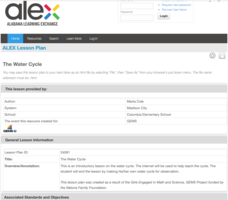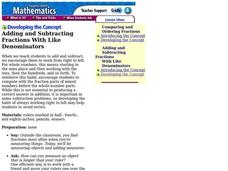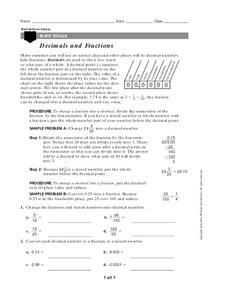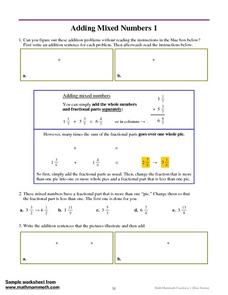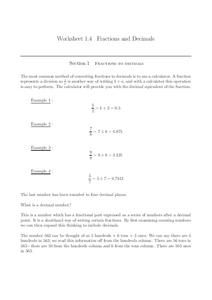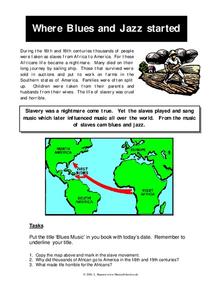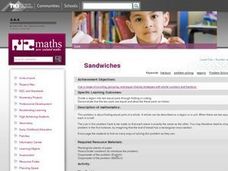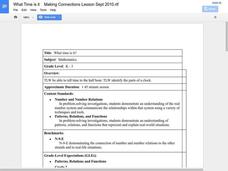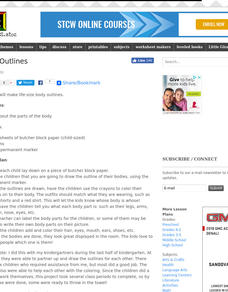Curated OER
The Importance of Being Flexible and Open-minded as a Visitor to Another Culture: Lesson 2 For "The Train Ride Home"
Learners examine the advantages of being flexible when visiting or living in a different culture. They read and discuss a first-hand account by a Peace Corps volunteer in Kazakhstan, and write a letter from the point of view of a...
Curated OER
Sleuthing A Writer's Skills
Young scholars read The Train Ride Home by Robin Solomon. In this literature response instructional activity, students will inspect the writing of Solomon to determine how she established a certain tone through her...
Curated OER
What is Good Use of Time?
Students analyze the best uses of time in other cultures. In this time use lesson, students read the poem 'Soccer Into Dusk' and 'The Meaning of Time' as analysis of time usage in other culttures. Students complete a discussion, journal...
Curated OER
Interesting Facts about the Historic Trails
The Oregon trail is a very interesting part of American history. The class, having read or discussed the events leading to the westward expansion and settling of the Oregon Territory, can answer each of these fill-in-the-blank...
Teacher Web
Poetic Sound Devices
As part of a study of poetic devices, kids are asked to identify the assonance, consonance, and alliteration found in a series of lines of poetry, and then identify the rhyme scheme and the types of rhyme found in Poe's "Annabel Lee,"...
Alabama Learning Exchange
The Water Cycle
Students explore the water cycle. In this earth science lesson plan, they read the book Water Dance by Thomas Locker and use an interactive whiteboard to review the water cycle with an interactive website.
Curated OER
Adding and Subtracting Fractions with Like Denominators
Young scholars add or subtract fraction parts of mixed numbers before adding or subtracting the whole number parts. For this fractions lesson, students learn to use a ruler to help them add and subtract fractions with like denominators.
Curated OER
Decimals and Fractions
In this decimals and fractions learning exercise, students read about decimals and fractions and how to change one to the other. They solve two multi-part problems practicing converting decimals to fractions and fractions to decimals.
Curated OER
Adding Mixed Numbers 1
In this adding mixed numbers worksheet, students write addition sentences using pie charts, add mixed numbers with the same denominator, and write mixed numbers as fractions in simplest form. Students solve nine problems.
Curated OER
Technology: Koo Koo for Clocks
Third graders design and make clocks compiling a materials list, creating adesign portfolio, and recording progress in a daily log. After making a full-size drawing of their clocks and with the assistance of high school technology...
Curated OER
Fractions and Decimals
In this fractions and decimals worksheet, 6th graders solve and complete 9 different types of problems. First, they determine the number of hundreds, tens, ones, tenths, and hundredths in each decimal. Then, students write the numbers...
Curated OER
Count On It!
Learners investigate money. In this consumer math lesson, students use coins, identify their value, then group them in various ways to equal a dollar.
Curated OER
Codebreaker Math
Students solve addition and subtraction problems and decipher and write messages using a code. They read and discuss an informational fact sheet about the Navajo code talkers from World War II, and decode and re-code messages using math...
Curated OER
President Gerald R. Ford
In this Gerald Ford worksheet, students read a 3 page excerpt on the life, career and death of President Gerald R. Ford. They then use the information they read to answer 8 multiple choice questions. The answers are on the last page of...
Curated OER
Where Blues And Jazz Started
In this music history worksheet, students will read five paragraphs about the history of blues and jazz music and respond to 10 short answer questions.
Curated OER
Starvation in the Ghettos
Students investigate how human beings survive under camp and ghetto life's extreme condition while understanding the USRDA requirements. They recognize the suffering and loss of life due to the lack of adequate nutrition.
Curated OER
10 Fresh Ideas to Get Your Students Writing
Here are some enticing writing ideas that will motivate any student.
Novelinks
The Winter’s Tale: Storybook Strategy
Introduce class members to the conventions of the romance genre and the theme of familial relationships with Mahlon F. Craft's illustrated Sleeping Beauty. The themes are a focus of their study of The Winter's Tale.
Odell Education
Making Evidence-Based Claims: Grade 9
Sorry, Charlie. Scholars take a close look at Apology by Plato. Activities analyzing the text help pupils understand, make, organize, and write about claims. Learners work in groups, complete claim tools, and evaluate thinking by filling...
Inside Mathematics
Party
Thirty at the party won't cost any more than twenty-five. The assessment task provides a scenario for the cost of a party where the initial fee covers a given number of guests. The class determines the cost for specific numbers of guests...
Public Schools of North Carolina
Math Stars: A Problem-Solving Newsletter Grade 2
Develop the problem solving skills of your young learners with this collection of math newsletters. Covering a variety of topics ranging from simple arithmetic and number sense to symmetry and graphing, these...
Curated OER
Sandwiches
Pupils are introduced to the problem by thinking of all the ways 2 of their classmates could share a peanut butter sandwich. In pairs, students work describing their ideas. They then keep a record of all the different ways they find to...
Curated OER
What Time is It?
Students explore time by completing worksheets. In this time-telling lesson, students utilize images of clocks and determine what time they read. Students answer more clock questions with a Smart Board and complete a clock worksheet with...
Curated OER
Body Outlines
Students trace their bodies onto butcherblock paper and then add clothes, hair, eyes, mouths, etc. They use them to identify their body parts.







